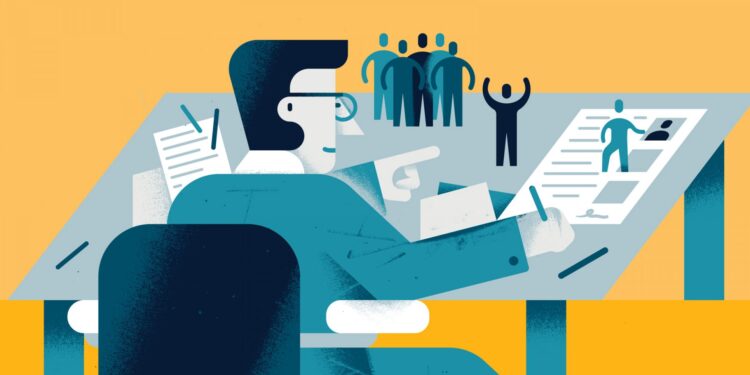“Being occupied means engaging in activities, but being effective signifies accomplishing tasks.” These thoughtful words resonate deeply, despite their anonymous source. As a leader, I hold this truth close; my earlier career years did not fully reflect this understanding. Indeed, I invested considerable time exploring various methods aimed at boosting my efficiency. It’s an ongoing journey of discovery; my personal quest for improvement never ceases.
I have searched extensively for solutions, only to realize that one key factor was right before my eyes: my workspace was cluttered. This is significant because not only do you waste time sifting through mess, but an untidy environment also breeds negativity. While I managed to complete tasks and progressed in my career, it wasn’t until I reached my 40s that I truly grasped how to optimize my work environment.
Now that I’ve embraced this new approach, my happiness and productivity have notably increased. My desk has transformed into a sanctuary. Implementing these seven practices has made a remarkable difference:
1. Organize your area.
Simplification often entails tidying up. Although some individuals are naturally more organized, studies clearly show that a clean and simple workspace enhances productivity for all. Additionally, how your space appears can shape your interactions with colleagues; many might perceive those with messy workspaces as disorganized or lazy.
Reflect on the first impressions you’ve formed. Upon entering a spotless restaurant, hotel, or store, you notice the cleanliness and instinctively think that the business values attention to detail and takes pride in its work. I’ve always believed that dedicating a few moments to ensure your work area is tidy allows for better focus on significant tasks and fosters a more competent appearance.
2. Cultivate the right atmosphere.
Your workspace is a reflection of your personality, so make it inviting, calming, and focused. While the elements may vary, incorporating a few personal items—a couple of photos, a small plant, or a Rubik’s cube—alongside ample open desk space can greatly enhance your mental clarity. Proper lighting that is neither too bright nor too dim is also crucial for peak productivity.
I favor a minimalist approach to organizing my workspace, free of distractions. I believe that positive energy impacts productivity. Though difficult to define, you certainly recognize it when you feel it—it is not uniform for everyone. It’s essential to surround yourself with elements, furniture, and people that generate positive energy for you. For me, this includes muted colors, excellent lighting, plants, abundant natural light, and (of course) fantastic colleagues.
3. Disable your alerts.
You observe someone giving a presentation, and notifications keep appearing on their screen. They try to ignore it, yet pause to dismiss each pop-up before proceeding. This scenario is all too common—and it likely occurs at your own workspace, too.
One of the most effective steps I took to enhance my productivity was to turn off my notifications. Nothing interrupts my computer screen, and only family members can reach me by phone. The notion that constant availability equates to better work performance is simply untrue. Mute your notifications, allocate specific blocks of time for responding to messages, and witness your productivity flourish.
4. Minimize paper use.
A cluttered desk and workspace can hinder your efficiency, distract you, and elevate stress levels. Most items on your desk may be unnecessary, and papers you require later can easily be filed. In general, searching through digital documents is significantly more efficient than sifting through piles of paper.
5. Maintain a paper stack.
I’ll admit it—I’m a fan of stacking. Despite keeping my workspace neat, I always have a dedicated stack of papers in one corner, prepared for my review. Throughout the day, I add to this stack and ensure it’s cleared by the day’s end or the following morning. To avoid distraction from what’s on top, I cover my stack. This keeps my immediate priorities clear and allows me to focus on pressing tasks.
6. Keep a journal.
Although it may seem outdated, studies suggest that writing notes by hand enhances memory retention. Jotting down a daily agenda or list allows you to organize and prioritize tasks in your mind, equipping you for the day with greater clarity and focus. I always keep an open notebook on my desk next to my paper stack and bring it to meetings.
This practice is supported by the fact that Sir Richard Branson has accumulated years’ worth of notebooks packed with ideas and insights. Over time, I have tried various notebooks, but I prefer plain blank pages. This straightforward format grants me the freedom to sketch ideas, jot down notes, or compile lists without limitations.
7. Schedule time for people.
Every role involves interaction with colleagues and clients. Whether you’re checking in on employees, answering customer inquiries, or discussing your product, engaging with others requires time. I used to disregard this factor while cramming my schedule with tasks for every minute of my workday.
Currently, I aim to set aside about 30% of my office time for interactions. Knowing I have this time allocated allows me to focus completely on my colleagues; I’m not meant to handle anything else during those minutes—and this understanding leads to a significant impact.
In school, it was termed MBWA: management by walking around. As a child, watching my mom in her hair salon taught me the importance of personal interactions, as she engaged with her clients while mentoring fellow stylists. As a college waiter, I observed various aspects of teamwork. Here at VARIDESK, I get to oversee larger strategies while staying connected to my team on the frontlines of business.


